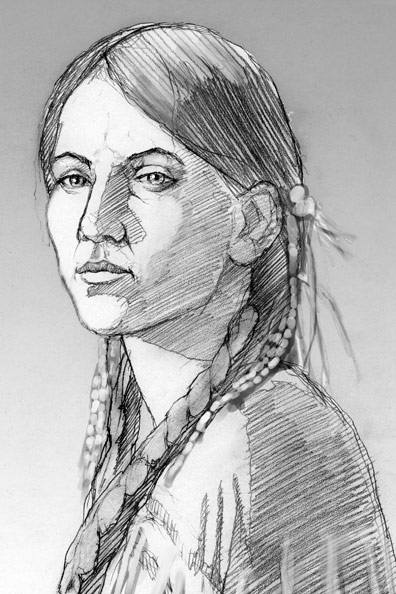 Question:
Question: How do you illustrate the Kyoto Protocol without spinning it?
Answer: There are about a million ways, probably. In this illustration for the
Bulletin of the Atomic Scientists, we weed out all but one.
The Kyoto Protocol was agreed on December 11, 1997, when the 3rd Conference of the Parties to the treaty met in Kyoto, Japan, and entered into force on February 16, 2005. It aims to essentially bring participating countries together in an effort to reduce the greenhouse gases that contribute to global warming by 5–6% of the 1990 levels.
The gist of the assignment was that the essay accompanying it had no strong opinion about the treaty. Its purpose was to enlighten and inform. The illustration, subsequently, needed to reflect this non-opinion and give the viewer an idea of the treaty's purpose without saying it is good or bad. So, my task became how to illustrate countries coming together to reduce greenhouse gases.
For the
Bulletin (one of THE all-time great clients), I always knock out a voluminous amount of preliminary sketches in order to flesh out as many (hopefully quality) angles as possible, as well as give the client flexibility to choose the solution that best fits their vision for the article, as well as their overall vision for the publication (I also go the extra mile with preliminary sketches because I am conscientious about providing an above-and-beyond service from initial contact through final art). This sketch was the chosen winner. The single hand represents the unified countries reducing (erasing) greenhouse gases emitting from a slew of smokestacks. Of course the trick is not only coming up with the idea, but also composing it, visually, into something pleasing to the eye and behaving according to our laws of good design, yet also be immediately communicative. All parties were very pleased, which pleases me doubly.
This segues into an interesting question and a continuation of a very intriguing discussion I was pleased to have with one of the generous followers of this blog. Does an artist run the risk of becoming pigeon-holed by depicting a topic that might be polarizing?
I definitely do not think my image strikes enough fear into viewers' hearts to warrant a concern, but what about an illustration that steps onto the bleeding edge of an extreme opinion? Will this artist be called-out with mock-disdain on
The Colbert Report? As an artist and a business-person, I can only hope I end up on Stephen's show. But my larger answer is, in my opinion, no. I can, however, think of two examples of art that, not long ago, caused a mass-movement of consciousness. Remember the recent Ronald Reagan cover of
TIME Magazine? It showed an illustrated tear streaming down his face that led to just such an appearance on the
Report. Remember the O.J. cover back in the day, illustrated -- by an illustrator -- with great effect to evoke a mood? Both illustrations caused many people to think the magazine had just sneakily doctored photos to make Reagan and O.J. look bad. Both artists are hugely popular in the illustration field and have suffered no scars from these incidents. In fact, of those carrying the torches and pitchforks, at the time, I would wager the vast majority didn't know the artists' names, and even fewer would remember their names today. I would also suspect many art directors were watching from the sidelines with amusement and awe at the publicity. I know I was.
I know art has the potential to effect change. There is a great book out called
The Design of Dissent by Milton Glaser and Mirko Ilić. It showcases art and design that exemplifies its potential power -- speaking on many levels and cutting the viewer to the core about war, peace, government, humanity, and the lack thereof. The ideas are brilliant, as are the artists who came up with them. Will they, or similar artists, be ostracized from doing something more benign because of their strong opinions? Doubtful. In my view, those who come up with great solutions will be prized for just that by those who make the decisions to hire. Of course, if one's portfolio is riddled with an overtly substantial amount of work featuring the same angle on a particular topic, or topics cut from the same talking points, then, yes, I would say there is risk. Problem-solving then ceases to be the point. His or her stance on X, Y, and Z becomes the point.
If you are savvy enough, over time, to cover the left and the right with equal love or hate, then your opinions become irrelevant. It's akin to a quality news anchor to whom you cannot distinguish a political affiliation. If an illustrator can bring that level of trust to their brand by having a body of work depicting pure problem-solving, rather than partisanship, then I would say the odds of you being golden are quite substantial. That means an intelligent, far-sighted approach to your work and defining what you want from it.
Don't be afraid to try something. Decide not to do something because it does not fit your vision for your work.
"But, that's just my opinion...I could be wrong." (Dennis Miller)
 This illustration was part of a series I produced for Bicycling Magazine a while back for a story about two brothers' bicycling trip across Morocco.
This illustration was part of a series I produced for Bicycling Magazine a while back for a story about two brothers' bicycling trip across Morocco.


















